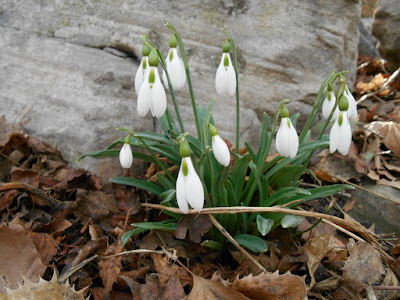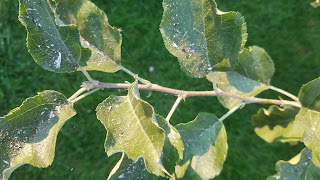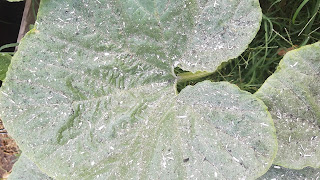The Top
Ten Vegetables to Plant in August
Posted by: Patti O’Neal, Horticulturist and Urban Food
Systems Coordinator, Jefferson County
There is still time and August is a
great time to get another round of crops into the ground for a bountiful fall
harvest. The first average frost date
along the front range as been around the 2nd week of October for
most of the past decade. This gives you
nearly 90 days of growing time. In that
time, you can have a bounty of vegetables to enjoy all through fall.
Here are some of easiest fall crops to
grow.
Lettuce- An easy vegetable to grow. Leafy varieties are well suited to fall
gardening. The seeds need to be kept
moist and the soil temperature mitigated.
Once the seedlings are up mulch the soil to retain moisture. Lettuce does not appreciate a little frost
like its other leafy green cousins and must be protected from frost with frost
blanket. And the varieties are
beautiful, colorful and endless! Red,
green, spotted, ruffled, with names like Trout Leaf and Drunken Frizzy Headed
Woman.
Photo Courtesy of Farmers Market Foray
Radishes – One of the fastest, easiest crops to grow. They can be eaten raw for spicy crunch or
roasted or sautéed. The tops can be made
into a pesto. They like well drained,
fertile soil. Mulch and thin once
germination occurs. They mature in 25 to
30 days. There are Cherry Belle, Easter
Egg, Watermelon, Black varieties and more.
Swiss Chard – Beautiful and versatile, swiss chard can be
substituted for spinach in any recipe and offers flavor as well as color with
the beautiful stems. It grows all season
long but planting a new crop in the fall gives you a sweeter, tastier addition
to sautes, soups, stews or salads.
Beets – a flavorful, earthy flavored vegetable that can be
eaten raw, grated in salads, roasted or sautéed. Do best if thinned to 3 inches as they grow,
but the thinnings are awesome in salads, so don’t waste them. Plants may be grown for the greens as well as
the root and the smaller varieties are great for fall gardens and red and
golden varieties thrive here.
Spinach – Tolerant of many soil types and easy to grow on the
plains or in the mountains as it loves a hit of frost and sweetens to a mellow
flavor. Can be harvested as small leaves
and it will re-grow between harvests or wait until a more mature size. At least nine varieties grow successfully
here and is a favorite of the fall garden.
Photo Courtesy of Eden Seeds
Carrots -There
are so many varieties but choose those with a shorter-days to maturity
quotient. Carrots tend to take longer to
germinate than most other vegetables, so patience rules here. They like well drained even sandy soil and
will require some mulch to make sure the soil does not crust preventing good germination
and to keep shoulders from greening as the carrots mature. Even
watering will keep the roots from becoming weirdly shaped.
Kohlrabi – A fun
but unusual vegetable. Best grown from transplants
which are available locally. Once
established, they benefit from a good side dressing of organic matter. Can be harvested when the stem is 2-2.5
inches in width.
Parsley – the universal herb that brightens any dish. It has health benefits you never dreamed of;
antioxidants, antibacterial, cancer fighting properties and more. It is slow to germinate, so keep evenly moist
and be patient. Once it does, you can
keep harvested and the plant will produce well into the cold weather and more
if protected.
Asian Greens – Asian Greens are a delectable addition to the fall
garden as well as your fall dishes. They
are easy to grow in well aerated soil with a little nitrogen boost.
 |
Photo Courtesy of Melissa's Specialty Vegetables
|
Dill, Cilantro – two favorite herbs that love the cooler temps to
thrive. Dill can be a loose canon in the
garden, spreading everywhere. Planting
now will give you plenty of delicious leaves for your cooking and pickling
without huge flower development which eventually spreads seeds all over. Then cilantro can be replanted now so you can
make all that lovely salsa as tomatoes continue to ripen through the fall.
Key cultural considerations:
· Plant varieties that have short days to maturity to be
sure to reach full growth and a successful harvest.
· Most of these crops are leafy and do not require a
full 8 hours of sunlight to grow. So, if
you did not have adequate sunlight to grow peppers and tomatoes, you likely
will have a great spot for a pot of spinach, chard or kale.
· These are cool season crops that you are planting in the
heat of summer, so the soil is warm as well as the ambient temperatures high. Keep the soil evenly moist and mulch to keep
the seeds cool so that they germinate successfully. Be diligent and consistent with your watering
– take care to not overwater!
· Once seeds germinate and begin to grow, the cooler
temperatures these plants thrive on will begin.
As a matter of fact, these plants are designed to take a hit of frost which
concentrates the carbohydrates and makes these vegetables sweeter than their
spring counterparts.
· Insect pressure can by heavy in the high temperatures
of August. In addition to good cultural
care, you may employ season extenders to cover the beds or pots and help young
seedlings get off to a good start.
· If you are new to season extenders, they can be
purchased locally under the name “floating row cover,” “plant protection
blanket,” “frost blanket.”
For
seedlings, these can be applied directly over the soil until germination occurs
and seedlings are up several inches (thus, floating row cover) and if you need
deep frost protection later in the fall, it is easy to install hoops from wire
or electrical conduit or other re-purposed materials to spread the frost blanket
over.
 |
Photo Courtesy of WI Master Gardeners
|
For
additional help:
This
is a wonderful guide to growing Vegetables in Colorado by Colorado Extension
Horticulture agents. There are tips on
specific crops as well as with hints for mountain gardeners.
https://cmg.extension.colostate.edu/wp-content/uploads/sites/59/2020/06/Colorado-Vegetable-Guide-2.1.pdf

















